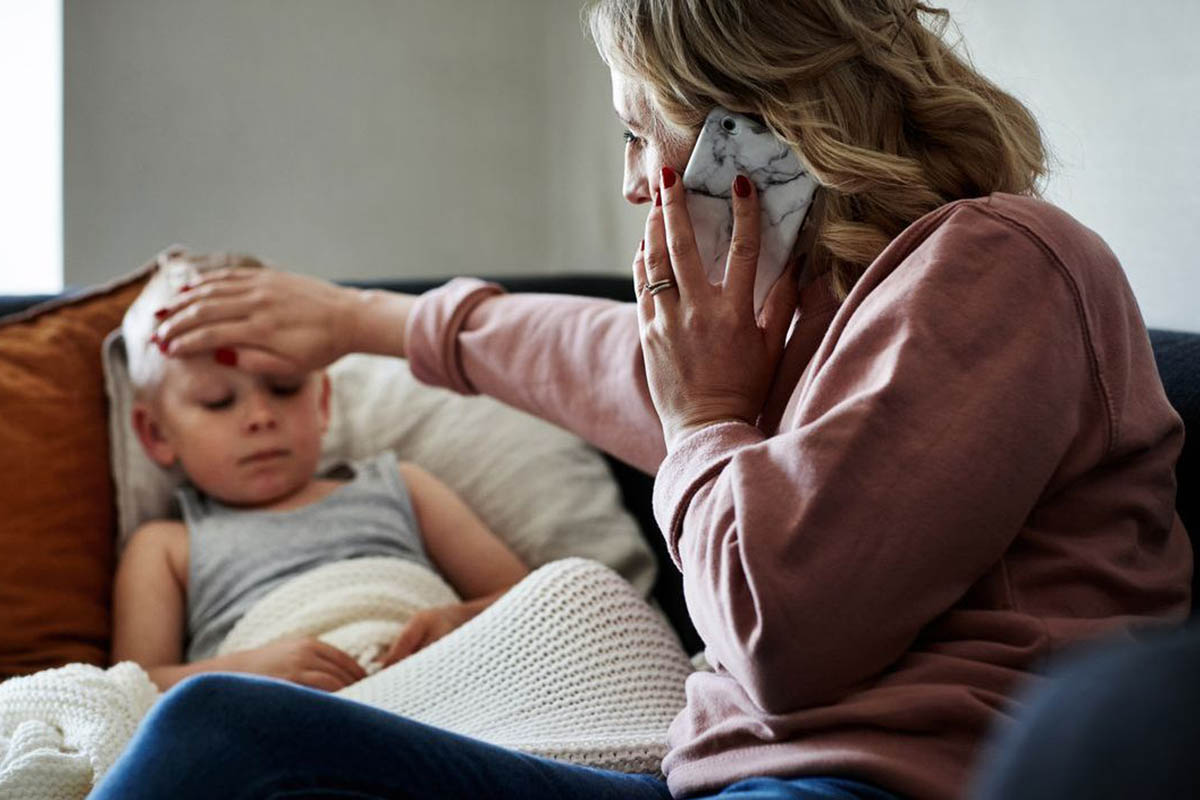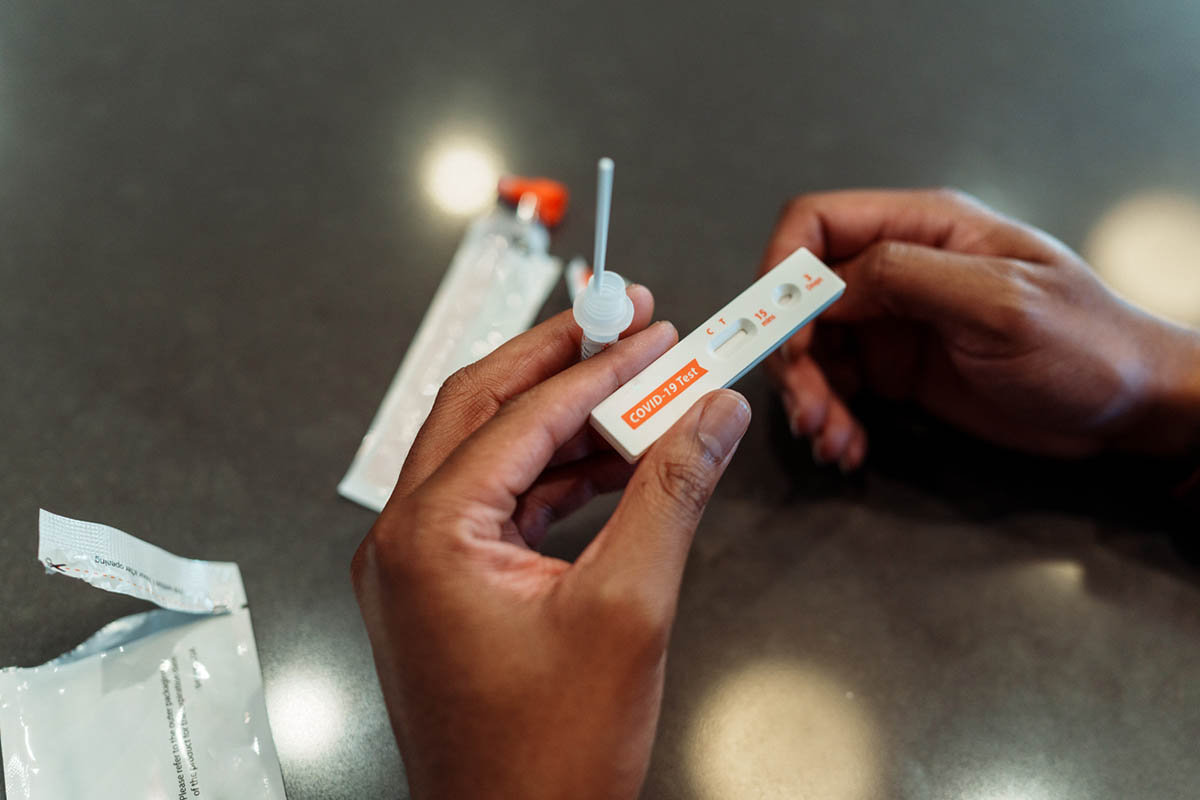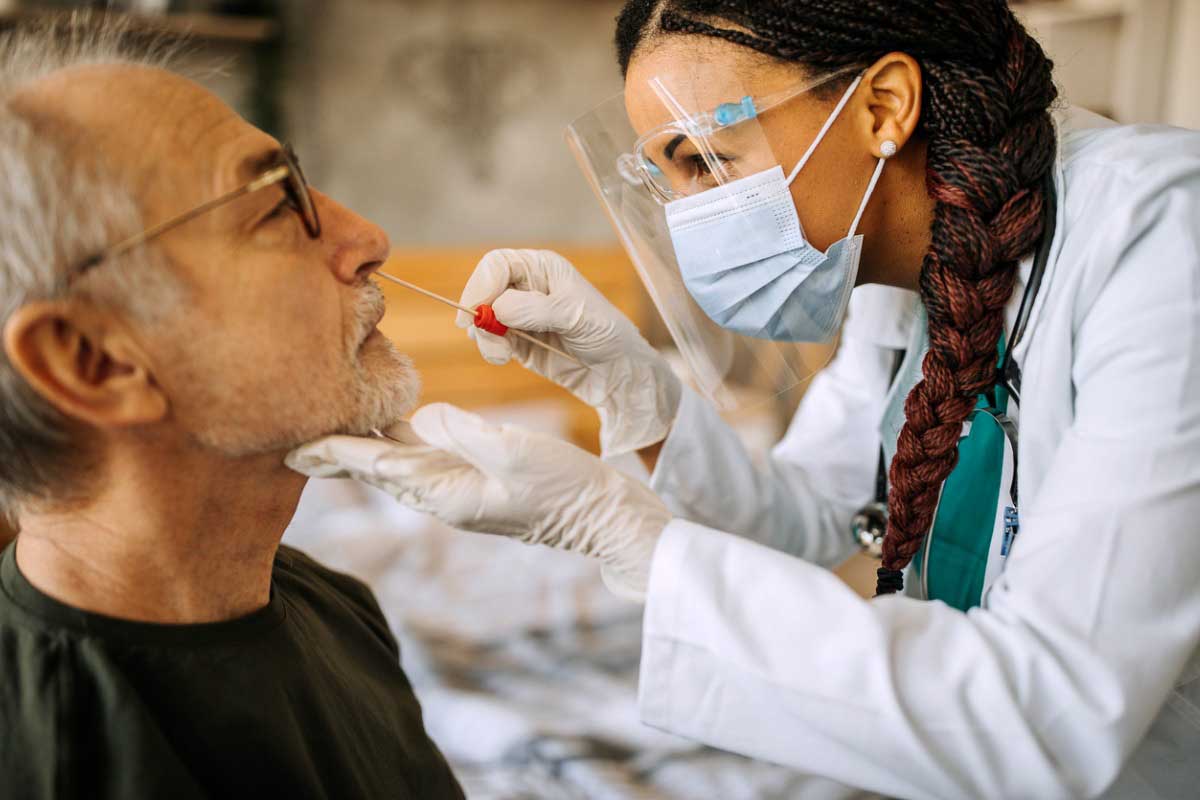aPenn State College of Medicine, Hershey, Pennsylvania
bTisch Cancer Institute affiliated Icahn School of Medicine at Mount Sinai, New York, New York
cHershey Medical Center/Penn State College of Medicine, Hershey, Pennsylvania
*Corresponding author: Ankit Jain, MD, Department of Psychiatry, Milton S. Hershey Medical Center/Penn State College of Medicine, 500 University Drive, Hershey, PA 17033 ([email protected]).
Prim Care Companion CNS Disord 2020;22(6):20l02828
To cite: Jolly TS, Pandian GSDB, Batchelder E, et al. Posttraumatic stress disorder exacerbation as a result of public masking in times of COVID-19. Prim Care Companion CNS Disord. 2020;22(6):20l02828.
To share: https://doi.org/10.4088/PCC.20l02828© Copyright 2020 Physicians Postgraduate Press, Inc.
Posttraumatic stress disorder (PTSD) often follows traumatic events, including physical assault, natural disaster, or other life-threatening experiences. Symptoms may include hyperarousal, anxiety, nightmares, irritability, mood swings, flashbacks, and depression.1,2 There have been past reports of increased prevalence of PTSD in patients following infectious disease outbreaks, including during the severe acute respiratory syndrome (SARS) outbreak in 2003.3 This picture is parallel to the psychological effects of the pneumonia outbreak, later determined to be coronavirus disease 2019 (COVID-19), caused by SARS coronavirus 2, that was reported in Wuhan, China in December 2019.4 It is known that outbreaks of infectious diseases can have psychological effects on populations.5 There have been various reports6 of worsening mental health outcomes and decompensation of mental illness during the COVID-19 pandemic. An American Psychiatric Association survey6 conducted in March 2020 showed that 40% of US residents were anxious about COVID-19-related illness and death, and 36% of Americans claimed COVID-19 has had a serious impact on their mental health. According to health experts across the world, use of face masks is vital in reducing the spread of COVID-19. In most parts of the United States, it is mandatory to wear masks in public indoor settings like malls, restaurants, movie theaters, and grocery stores. Here, we report 2 cases of PTSD exacerbation in the context of public masking that was reported to be a trigger leading to inpatient psychiatric hospitalization in both patients.
Case 1
A 46-year-old white woman with history of PTSD, major depressive disorder, generalized anxiety disorder, and panic disorder was admitted to the inpatient psychiatry unit due to severe panic attacks and PTSD-related flashbacks. The patient had no significant medical, surgical, or substance abuse history. Admission laboratories including complete blood count, comprehensive metabolic panel, urine drug screen, and urinalysis were within normal limits. On interview, the patient divulged that her flashbacks were related to seeing people wearing masks at the beginning of the COVID-19 crisis. Many years ago, the patient was sexually assaulted by a perpetrator who was wearing a mask. Since the time of her assault, seeing people, especially males, wearing masks triggered increased anxiety and panic. She experienced flashbacks to her assault, which had become so intense that she began having panic attacks both at home and in public spaces, as well as increasing suicidal ideation, which ultimately led to inpatient admission. The patient was single and unemployed at the time of admission. She was started on fluoxetine, which was titrated to 30 mg/d, and lorazepam 1 mg was initiated for breakthrough anxiety as needed to a maximum of 3 times daily. Additionally, she began taking prazosin 1 mg at bedtime to address her PTSD-related nightmares. Trauma-focused cognitive-behavioral therapy was initiated, and outpatient referral was made for its continuation. The patient reported significant improvement in her mood and PTSD symptoms and was discharged with outpatient follow-up.
Case 2
A 55-year-old white woman with history of PTSD and generalized anxiety disorder was admitted to the inpatient psychiatry unit for suicidal ideations and worsening of mood due to reemergence of flashbacks and intrusive memories of a traumatic event in the context of COVID-19 related to the use of a face mask. The patient was married with 2 grown children and was gainfully employed. Past medical history included arthritis, herniated discs, and dyspepsia. The patient reported that starting at age 5 years, she was sexually assaulted by her brother. She stated that when her brother would assault her, he would put his hand on her nose and mouth and threaten her to not tell anyone about the assault. She noted that whenever she put on a mask, her heart started beating really fast, and it reminded her of the time when she was molested. She said that when she initially saw on TV that people would have to wear masks, perhaps indefinitely, it made her extremely anxious, and she had a flashback of the sexual assault incident—she had not had such a flashback in a long time. She stated that due to the ongoing pandemic-related masking, she had been having intense flashbacks and nightmares of her assault. The patient subsequently spent about 6 days in the inpatient psychiatry unit. While in the inpatient unit, she had a trial of sertraline, which she failed due to having intolerable gastrointestinal side effects. She was then started on escitalopram 10 mg/d orally with meals, which she tolerated well. She was also able to engage in supportive and cognitive-behavioral therapy while on the unit. The patient was subsequently discharged to outpatient care with psychiatry and therapy follow-ups. At follow-up, the patient reported that she was doing much better as well as significant improvement in her PTSD and anxiety symptoms.
Discussion
There were no other relevant medical, substance abuse, or surgical illnesses in either of the patients presented here. They were discharged back to their homes with outpatient care. In case 1, lack of psychosocial support and financial stressors were more predominant than in case 2. Both patients benefited from therapy and medication management. Various tools to manage and cope with stress in the context of ongoing mandated masking were shared with the patients.
These cases shed light on the dilemma of masking properly to reduce the risk of COVID-19 transmission but increasing the risk of worsening of mental health for patients with history of PTSD or other mental health conditions. While there have been studies on worsening of other mental health conditions in times of COVID-19,7 this is the first case series pointing out the risk and aftermath of PTSD exacerbation in 2 patients in the context of COVID-19-related masking.
The pathophysiology of PTSD remains unclear to date. Fear is an adaptive response that protects the self from danger.8 It has been shown that regulation of the mechanism to suppress fear is reduced in patients diagnosed with PTSD, even in safe conditions.8 Previous studies have shown that decreased sleep, female sex, people aged ≤ 40 years, college students, and those suffering from chronic psychiatric illness have an increased risk of developing PTSD.1,9,10 The current and previous pandemics have led to an increase in PTSD in various population groups.11 This increase in PTSD was seen during SARS in 2003.1,3 The prevalence of posttraumatic stress symptoms is believed to be higher in areas with increased COVID-19 cases.1 There have been previous reports7 of increased psychiatric hospitalizations in the context of COVID-19-related stressors.
The use of masks in public places has been strongly advocated by many countries to reduce the spread of COVID-19 infection. Studies have shown that humans need cues from others such as facial expression, tone of voice, and body posture to feel safe, and nonverbal communication relies heavily on facial expressions12; therefore, mask wearing may obscure the expressions and cause discomfort in safe environments. The use of personal protective equipment during COVID-19 in isolated intensive care unit patients have led to “postintensive care syndrome,” which mimics PTSD in some patients.12
In both of our patients, the use of masks by the general public exacerbated their PTSD symptoms, leading to worsening of their anxiety, which led to suicidal ideations and then to inpatient psychiatric admission. Although masks could be a confounding factor, and masks are deemed necessary from an infectious disease and public health standpoint due to the COVID-19 pandemic, further studies are needed to explore the effect of mandated masking in patients with PTSD and other psychiatric comorbidities. While changes are occurring in hospitals, training programs, and medical education around the world in terms of varied presentation and sequelae of COVID-19 infection, it is prudent to conduct more pertinent psychiatric review of systems in the context of COVID-19 and its psychological impact.9,13,14
Received: October 5, 2020.
Published online: December 23, 2020.
Potential conflicts of interest: None.
Funding/support: None.
Additional information: Information has been de-identified to protect anonymity.
REFERENCES
1.Liu N, Zhang F, Wei C, et al. Prevalence and predictors of PTSS during COVID-19 outbreak in China hardest-hit areas: gender differences matter. Psychiatry Res. 2020;287:112921. PubMed CrossRef
2.Deja M, Denke C, Weber-Carstens S, et al. Social support during intensive care unit stay might improve mental impairment and consequently health-related quality of life in survivors of severe acute respiratory distress syndrome. Crit Care. 2006;10(5):R147. PubMed CrossRef
3.Wu KK, Chan SK, Ma TM. Posttraumatic stress after SARS. Emerg Infect Dis. 2005;11(8):1297-1300. PubMed CrossRef
4.Kakodkar P, Kaka N, Baig MN. A comprehensive literature review on the clinical presentation, and management of the pandemic coronavirus disease 2019 (COVID-19). Cureus. 2020;12(4):e7560. PubMed
5.Cullen W, Gulati G, Kelly BD. Mental health in the COVID-19 pandemic. QJM. 2020;113(5):311-312. PubMed CrossRef
6.New Poll: COVID-19 Impacting Mental Well-Being: Americans Feeling Anxious, Especially for Loved Ones; Older Adults are Less Anxious. American Psychiatric Association website. https://www.psychiatry.org/newsroom/news-releases/new-poll-covid-19-impacting-mental-well-being-americans-feeling-anxious-especially-for-loved-ones-older-adults-are-less-anxious. March 25, 2020. Accessed December 1, 2020.
7.Jolly TS, Batchelder E, Baweja R. Mental health crisis secondary to COVID-19-related stress: a case series from a child and adolescent inpatient unit. Prim Care Companion CNS Disord. 2020;22(5).20l02763. PubMed CrossRef
8.Tang W, Hu T, Hu B, et al. Prevalence and correlates of PTSD and depressive symptoms one month after the outbreak of the COVID-19 epidemic in a sample of home-quarantined Chinese university students. J Affect Disord. 2020;274:1-7. PubMed CrossRef
9.Xiong J, Lipsitz O, Nasri F, et al. Impact of COVID-19 pandemic on mental health in the general population: a systematic review. J Affect Disord. 2020;277:55-64. PubMed CrossRef
10.Yin Q, Sun Z, Liu T, et al. Posttraumatic stress symptoms of health care workers during the corona virus disease 2019. Clin Psychol Psychother. 2020;27(3):384-395. PubMed CrossRef
11.Dutheil F, Mondillon L, Navel V. PTSD as the second tsunami of the SARS-Cov-2 pandemic [published online ahead of print April 24, 2020]. Psychol Med. PubMed CrossRef
12.Brown S, Schuman DL. Suicide in the time of COVID-19: a perfect storm [published online ahead of print May 3, 2020]. J Rural Health. PubMed CrossRef
13.Sher L. The impact of the COVID-19 pandemic on suicide rates. QJM. 2020;113(10):707-712. PubMed CrossRef
14.Batchelder E, Piper L, Sarwar S, et al. Psychiatric medical education in the age of COVID-19: the Penn State health experience. Prim Care Companion CNS Disord. 2020;22(5):20com02773. PubMed CrossRef
aPenn State College of Medicine, Hershey, Pennsylvania
bTisch Cancer Institute affiliated Icahn School of Medicine at Mount Sinai, New York, New York
cHershey Medical Center/Penn State College of Medicine, Hershey, Pennsylvania
*Corresponding author: Ankit Jain, MD, Department of Psychiatry, Milton S. Hershey Medical Center/Penn State College of Medicine, 500 University Drive, Hershey, PA 17033 ([email protected]).
Prim Care Companion CNS Disord 2020;22(6):20l02828
To cite: Jolly TS, Pandian GSDB, Batchelder E, et al. Posttraumatic stress disorder exacerbation as a result of public masking in times of COVID-19. Prim Care Companion CNS Disord. 2020;22(6):20l02828.
To share: https://doi.org/10.4088/PCC.20l02828
© Copyright 2020 Physicians Postgraduate Press, Inc.
Please sign in or purchase this PDF for $40.00.





